“It can be done” – Environmental Cartoons
For the 2018 HELCOM Ministerial Meeting in Brussels, environmental cartoonist Seppo Leinonen created eleven drawings, in cooperation with the HELCOM Secretariat, on themes relevant to HELCOM and its work. Ten drawings connect to the Contracting Parties, who through their leadership and support contribute to reaching the common goals for the Baltic Sea. One drawing is dedicated to the HELCOM Chair.
The drawings were exhibited at the Meeting as well as presented to the Ministerial delegations as meeting souvenirs.
NUTRIENT ACCOUNTING
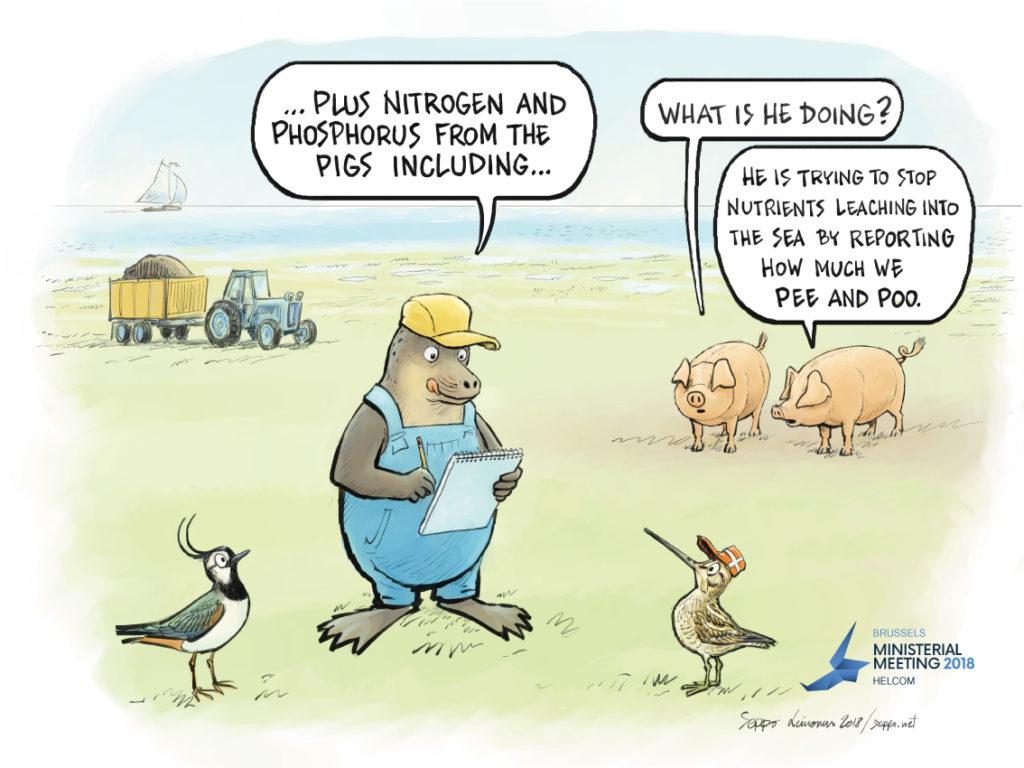
HELCOM decided in 2013 that all countries should have nutrient accounting on farms by the end of 2018: farms would calculate and report how much nitrogen and phosphorous they use each year. This is a tool for efficient nutrient use in agriculture, both for planning fertilization and for nutrient balancing after fertilization.
Denmark has a strong regulation on nutrient accounting and is the only country in the Baltic Sea with a quota system allocating a certain amount of nitrogen and phosphorous to each farm.
POLLUTION HOT SPOTS
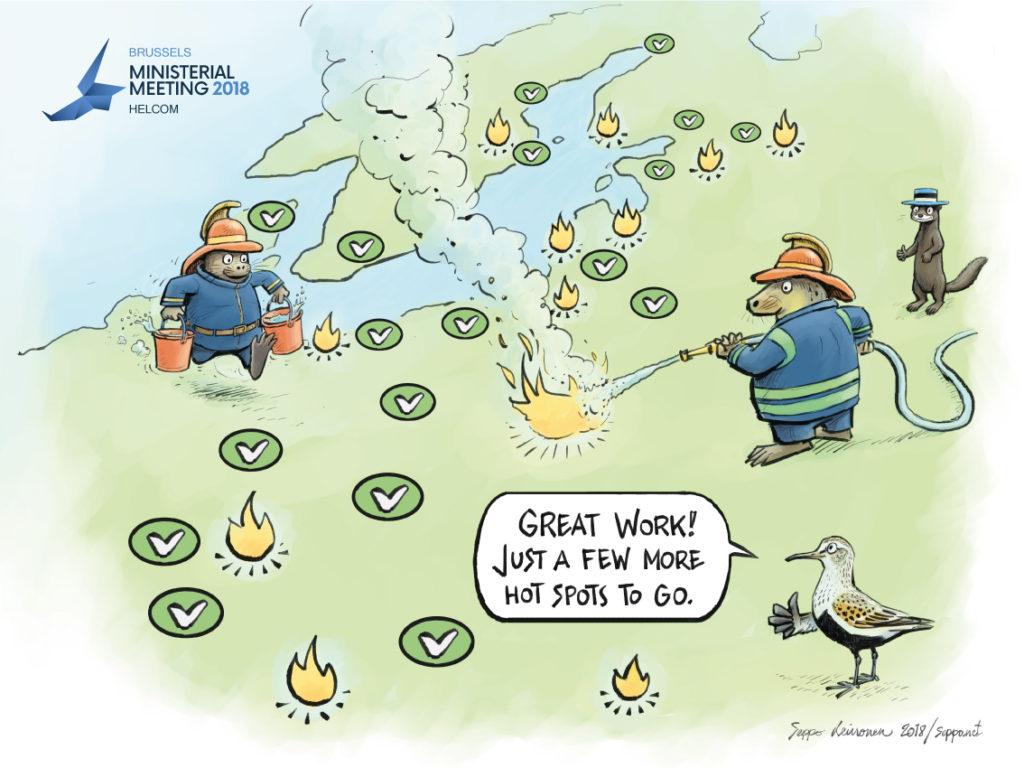
A list of significant pollution sites around the Baltic Sea – HELCOM Hot Spots – was established in 1992. Three quarters (118 hot spots, as of December 2016) have since been cleaned up, including wastewater treatment facilities, various industrial sites, and agricultural run-off.
Estonia has deleted 11 out of 12 hot spots in the country. The most recently deleted Baltic hot spot (2016) was Estonian: Kehra paper mill, previously a significant industrial polluter, now meeting all HELCOM requirements.
COOPERATION THROUGH THE EUROPEAN UNION
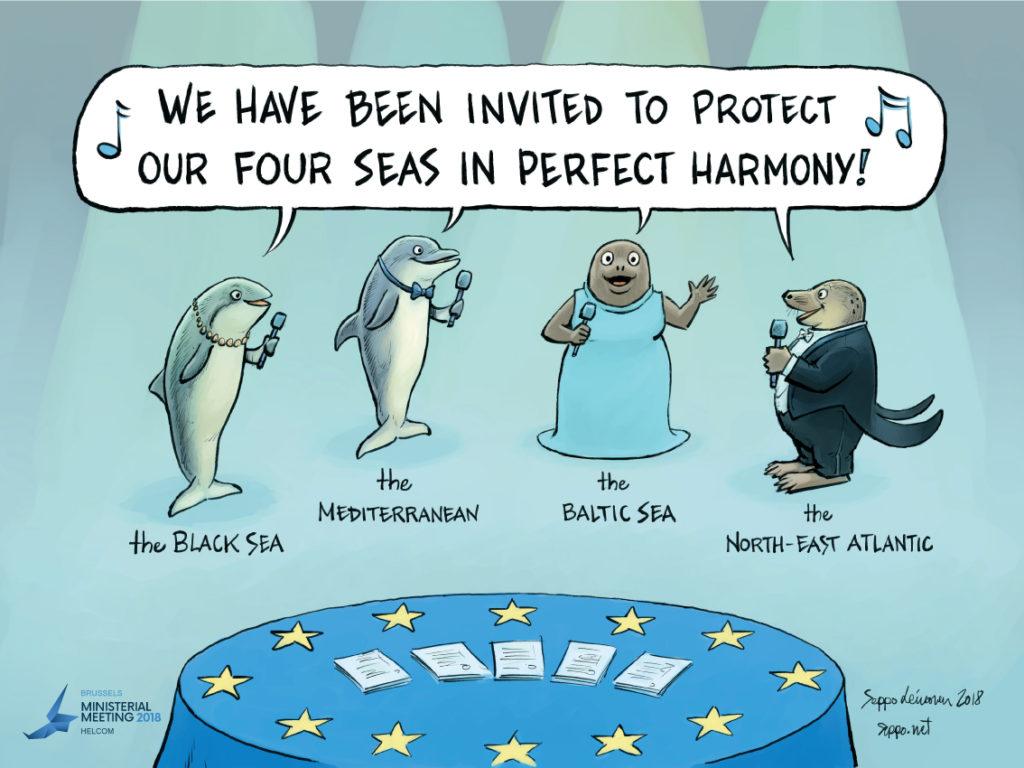
HELCOM is one of the many Regional Seas Conventions in the world, and one of four in Europe. HELCOM cooperates directly with OSPAR (Convention for the North-East Atlantic), and also has common ground with two other Regional Seas Conventions in Europe (in the Black Sea and Mediterranean).
The EU, as a Contracting Party in HELCOM, has a special interest as well as possibilities to enhance the links between the work in the four regional seas, for exchange of information and experiences, for sharing the processes on common issues, and for enhancing cooperation. The EU is, for instance, striving for a Europe-wide picture of the state of the marine environment via the Marine Strategy Framework Directive.
HELCOM CHAIR

Brussels may appear far from the Baltic, but the EU has been a HELCOM member for long, contributing to its successes. The EU has been showing great attention and determination for HELCOM matters during the past two years of chairmanship. With her exceptional dedication and knowledge, Marianne Wenning, HELCOM Chair, shows us the way forward.
NUTRIENT RECYCLING
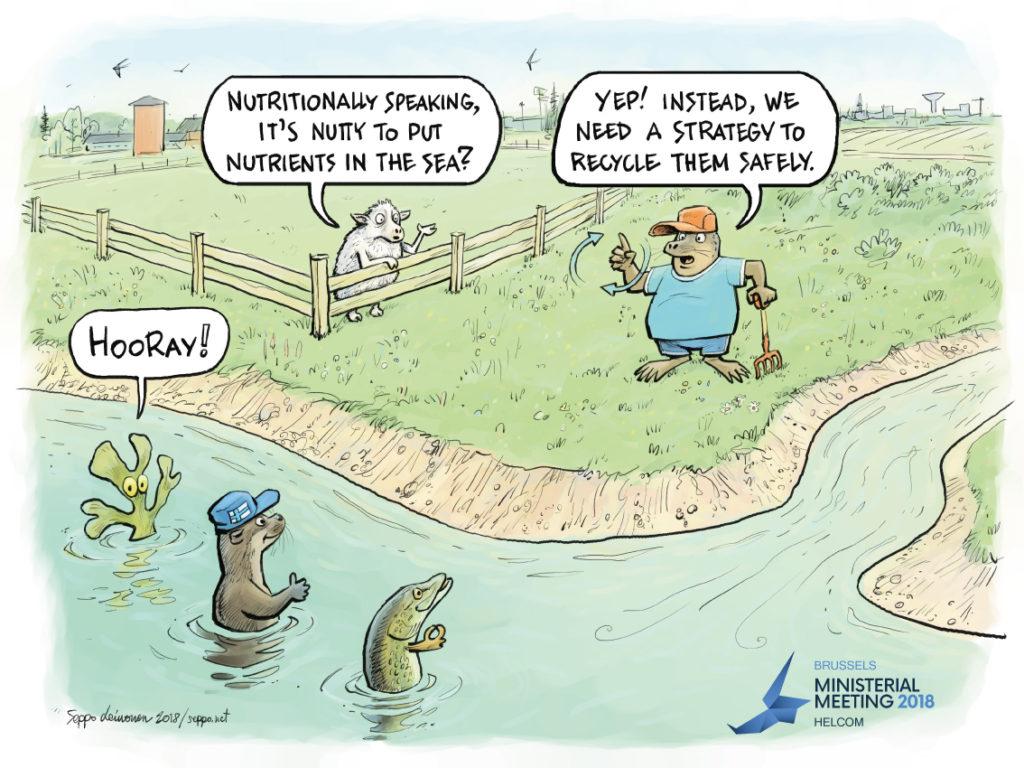
Nutrient recycling helps combat eutrophication while keeping nutrients in the food cycle. It aims to secure that as nutrients have passed through the whole food chain, they are in the end returned back to soil for plant production – allowing the cycle to begin again. Discussions ahead of the 2018 HELCOM Ministerial Meeting have included a possible regional strategy for nutrient recycling in the Baltic Sea area.
Finland is a forerunner in nutrient recycling, as part of its ambitious work in circular economy, and has initiated regional work on this topic in HELCOM.
MARINE LITTER
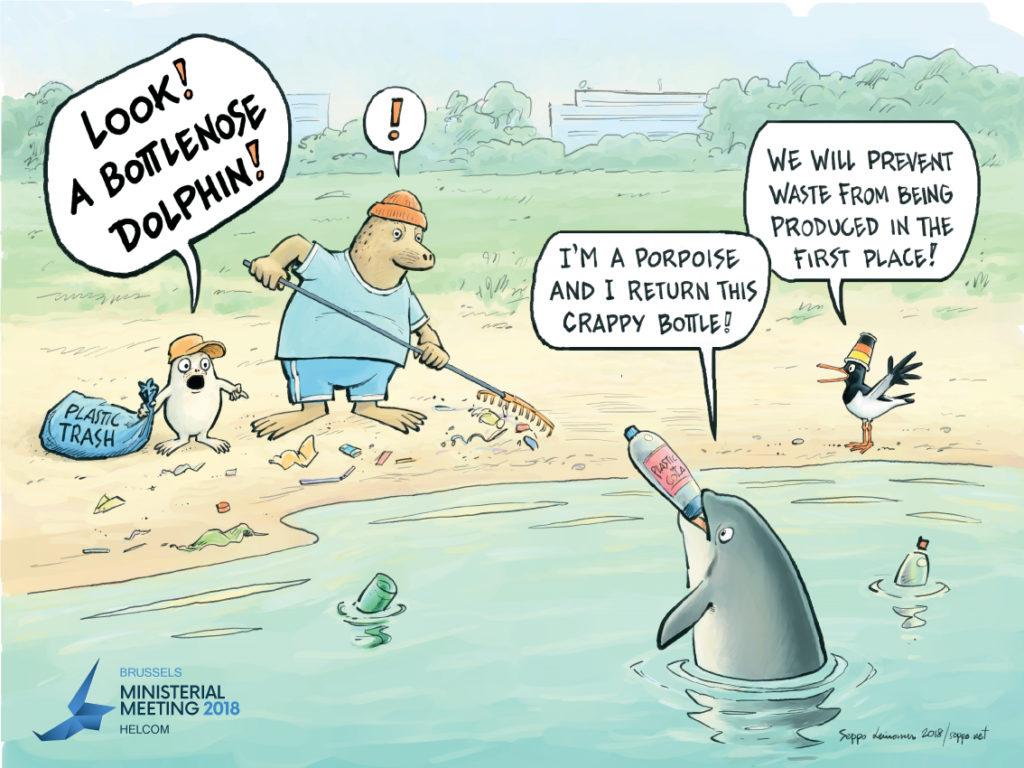
Marine litter is a rapidly growing concern at sea and on shores alike. It is believed to have a considerable impact on the environment globally, and it is an issue of concern also in the Baltic. Marine litter is not only an aesthetic problem but incurs socioeconomic costs, threatens human health and safety, and has impacts on marine organisms. Since 2015, HELCOM has a Regional Action Plan for marine litter.
Germany has actively raised the issue of marine litter both in a Baltic context and on a global level, achieving attention at the highest political level.
MARITIME SPATIAL PLANNING
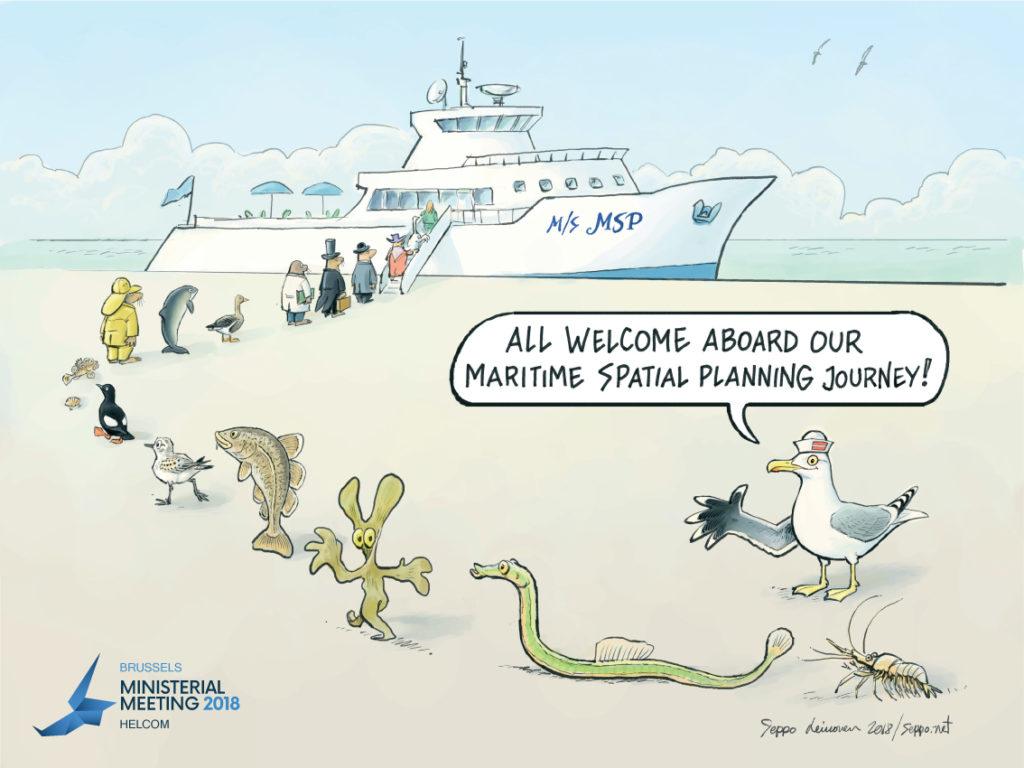
To reach the goals of international policies related to oceans and seas, countries that share the same waters need to work together and better coordinate on how those waters and their resources are used sustainably. The HELCOM-VASAB Baltic Sea Broad-scale Maritime Spatial Planning Principles from 2010 aim to help Baltic Sea countries in developing national maritime spatial plans that are coherent across borders and that apply the ecosystem approach.
Latvia is one of the Baltic Sea countries that has high ambitions as to incorporating a wide range of information on marine environment in MSP and utilizing best available knowledge on ecosystems in the planning process.
DUMPED CHEMICAL MUNITIONS
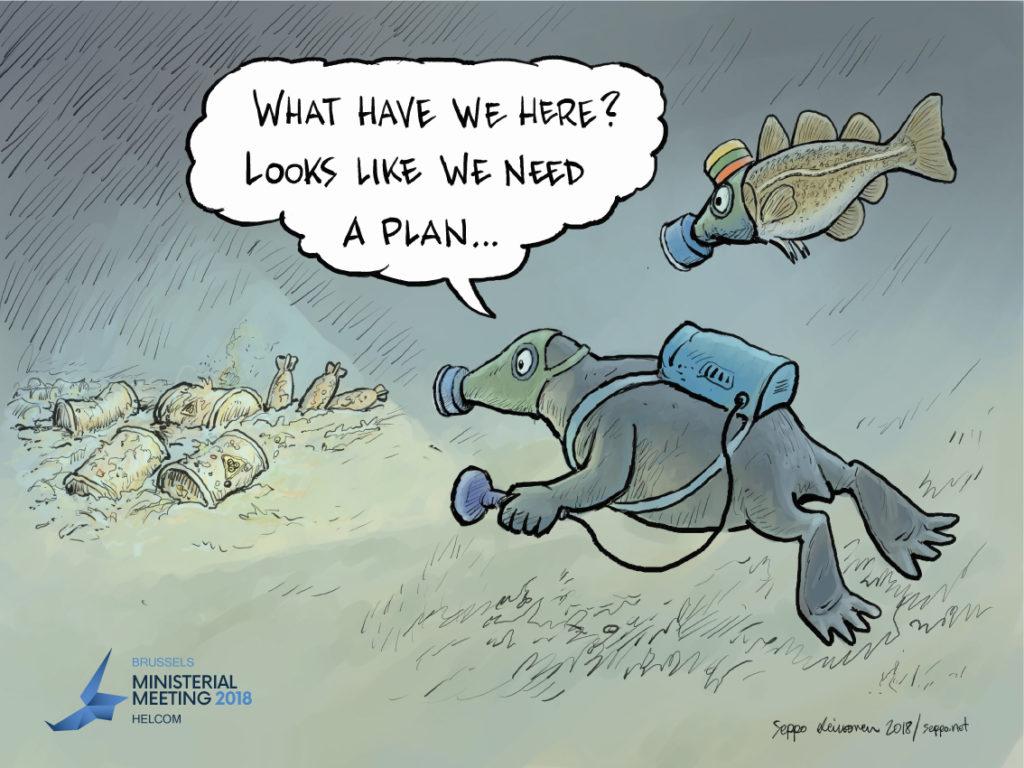
Around 40,000 tonnes of chemical munitions were dumped into the Baltic Sea after the Second World War, containing some 15,000 tonnes of chemical warfare agents. Even today, the possibility cannot be ruled out of people encountering chemical warfare materials and other objects while working in the marine environment of the southern and western Baltic Sea. HELCOM works to compile and assess information about all kinds of hazardous objects and to assess the associated risks.
Lithuania has worked for addressing the problem of dumped chemical munitions, including for increased awareness of its environmental effects and for sharing the Baltic Sea experience globally.
GHOST NETS
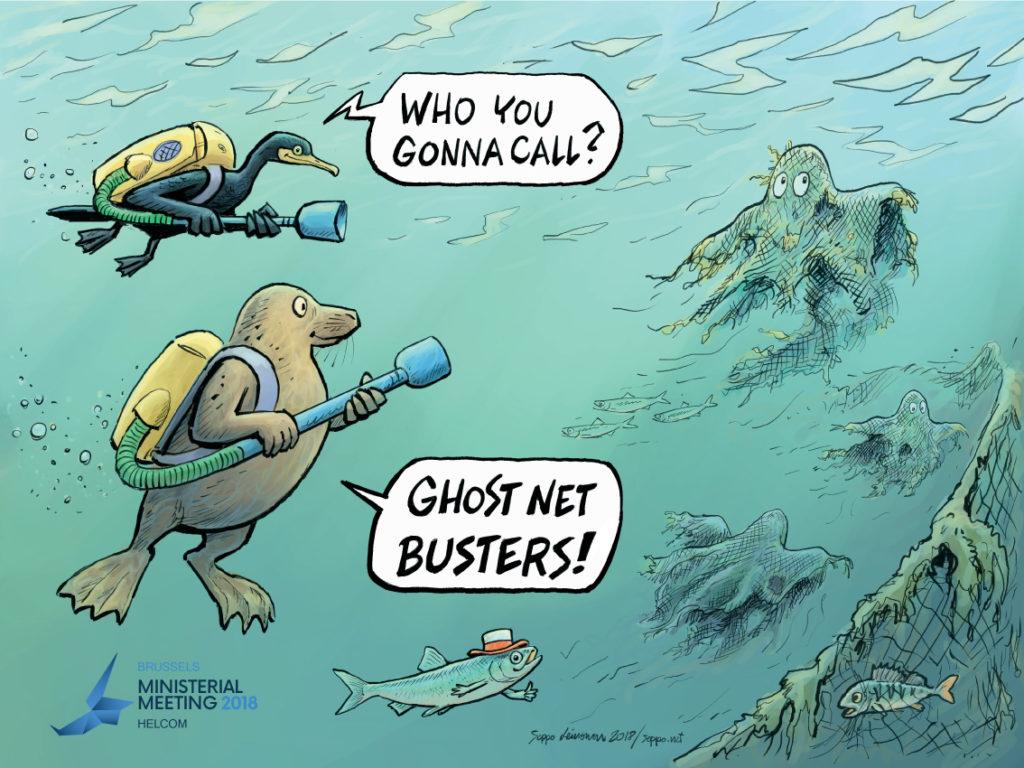
Fishing gear is lost in the sea for many reasons. It sometimes drifts far before settling on the seabed, and keeps entangling marine life for a long time. HELCOM’s Regional Action Plan on Marine Litter includes actions related to removal of lost gear and to reducing the loss of fishing gear, as well as initiatives to remove litter.
Poland is one of the first countries in the Baltic Sea where a larger scale removal of lost fishing gear has been piloted. Already in 2011, 4288 kg of ghost nets were retrieved in Polish waters during 15 days of trawling the sea bottom.
MUNICIPAL WASTEWATER TREATMENT FOR NUTRIENT REMOVAL
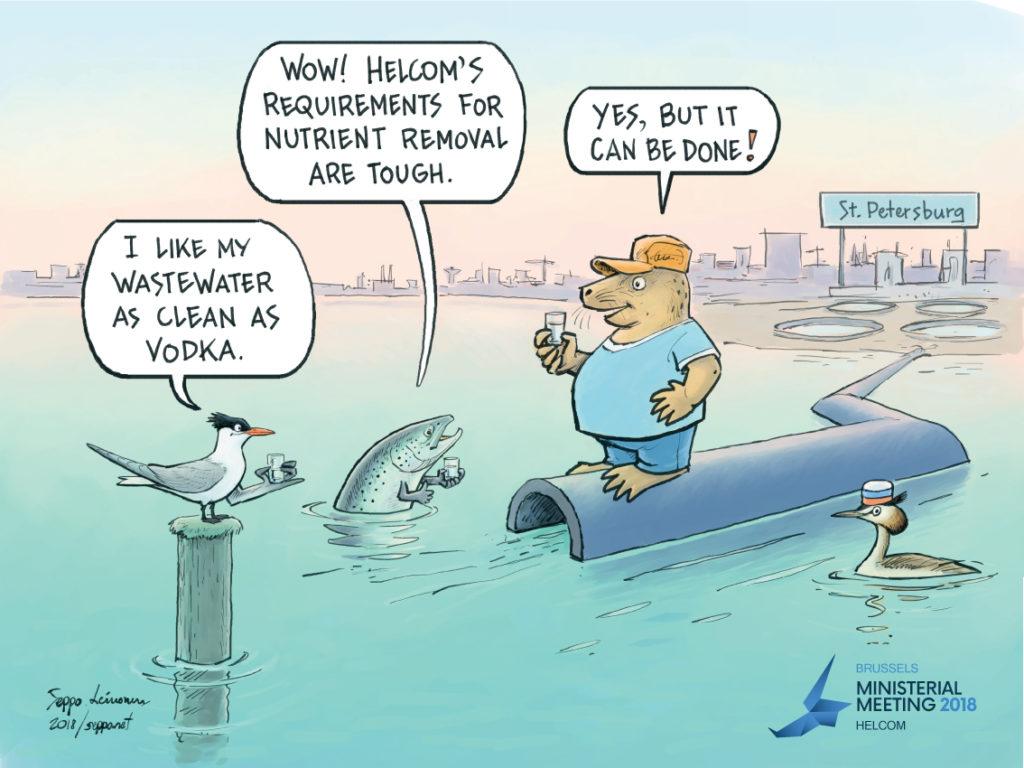
Improving municipal waste water treatment is a highly cost-efficient measure to reduce nutrient loads, a major cause of pollution in the Baltic Sea. Many cities in the Baltic Sea region have improved their treatment standards in recent decades and years, and are, for instance, meeting the requirements set by the EU Urban Waste Water Treatment Directive. However, even stricter standards, as set by HELCOM, are needed to save the sensitive marine environment of the Baltic Sea.
Russia has high aims for nutrient removal in its Saint Petersburg wastewater treatment plant, which now even exceeds the demanding HELCOM recommendations.
DISCHARGES FROM SHIPPING
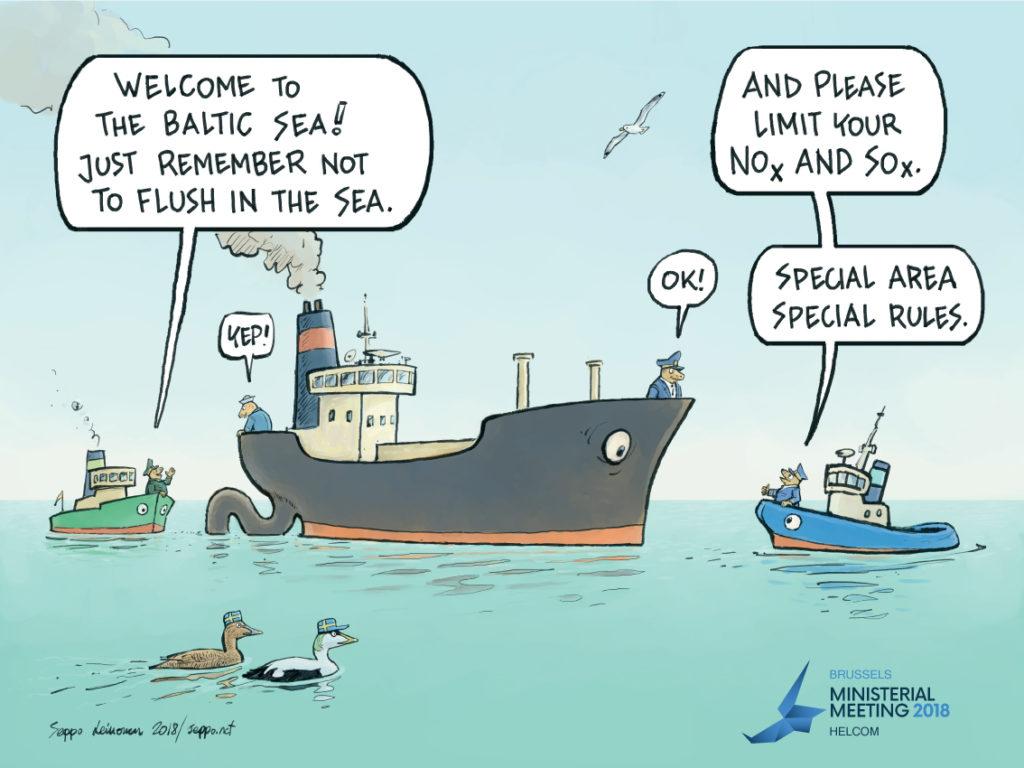
Environmentally friendly shipping is a priority for all Baltic Sea countries. The Baltic Sea is the first area in the world to receive the status of a special area for sewage from passenger ships according to the amended rules of the International Maritime Organization, banning discharge of untreated sewage starting 2021. Together with the recently agreed NOx Emission Control Area, this will reduce pollution from shipping in the Baltic Sea.
Sweden successfully brokered the final agreement among HELCOM countries on a proposal for a sewage ban for the International Maritime Organization.
SEPPO LEINONEN

Seppo Leinonen is known both in Finland and abroad as a cartoonist specialized in nature and environment. He draws humorous and critical cartoons of serious issues like biodiversity, climate change and environmental problems. A lifelong nature interest and tedious background studies are demonstrated in his cartoons, which contain, in addition to amusement, also information of nature and natural sciences.
Web: www.seppo.net/e
Twitter: @sepponet

